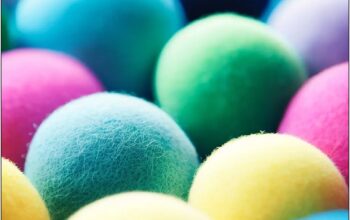So, you have an idea in mind for a sewing project? That’s exciting! Until the pressure of deciding on a fabric sets in, that is. Luckily for you, there are endless options, and you can immediately knock this off your list of concerns. When narrowing down the catalogue, make sure you have your checklist at the ready. Here is a guide to how to choose the best fabric for your project.
Types of Fabric
The first point to remember is that fabrics come under the two main categories:natural and synthetic.
Natural Fabrics
Natural materials are made from fibers obtained from plants and animals. Natural fabrics include linen, cotton, hemp, silk, cashmere, wool, jute, bamboo, mohair, and leather. Advantages of using natural fabrics include the fact that they are considered to beenvironmentally friendly and sustainable, and they are biodegradable. Using natural fabrics for your project may work if you’re looking for a breathable, highly absorptive, durable material. If you are interested in organically grown fibers, it may be more expensive to purchase. Luxurious clothing primarily uses natural fabrics due to the increased quality and comfort.
Synthetic Fabrics
Synthetic materials are entirely man-made and include the following:
- Rayon: obtained from wood pulp; used to make bedsheets.
- Nylon: produced from water, coal, and air; a frequently used product in the manufacturing of seat belts.
- Polyester: obtained from coal, water, air, and petroleum; popular amongst clothing manufacturers.
Synthetic materials are an attractive choice for a wide range of products, as they are often more affordable, easy to wash, soft, and durable.
In terms of specific types of fabric, there are hundreds to choose from, but it is helpful to begin with the most popular. As they range in their properties and finish, some will immediately appear to be inappropriate for your project, whereas others will stand out and meet your criteria:
- Chiffon: made from twisted yarn and used in numerous clothing items including scarves, blouses, and dresses due to its sheer and lightweight properties.
- Cotton: extracted from cotton plants, this fabric can be found in almost any clothing or furniture item, and is ideal because of its durability and versatility.
- Denim: produced from various cotton fabrics, the sturdiness and durability of denim makes it perfect for jeans and jackets.
- Lace: with the option of creating lace from silk and yarn, cotton, wool, or even synthetic fibers, lace is an easily accessible fabric. Known for being elegant and delicate, lace embellishes many garments from bridalwear to nightwear.
- Leather: developed from animal hides and skin, you will find this fabric in many jackets, shoes, and belts as a result of its wrinkle-free and durable properties.
- Linen: formed from the flax plant, the use of linen dates back around 36,000 years. A superb option for clothing, drapes, bedding, and tablecloths, linen is strong but lightweight, allowing for durable but smooth, cooling benefits.
- Satin: originally made from silk, a combination of polyester, wool, and cotton is now responsible for this glossy and slippery fabric. It can be used as a backing to other fabrics but is usually found in gowns, lingerie, and other sleek clothing.
- Silk: derived from the cocoon of a silkworm (often in China, South Asia, and Europe), silk is the strongest natural fabric. However, considering the price range and delicacy of this fabric, it is generally claimed by those of grandeur.
- Wool: created from sheep, goat, llama, and alpaca fleece, wool holds a high standard for thermal properties and resistance to wear and tear, which is why you will see wool as a dominant fabric in sweaters, socks, and gloves.
- Synthetics: whilst synthetic materials are not natural, they are not to be underestimated. The adaptability of synthetic fabrics has made them famous for fashioning almost anything.
Decide on a Design
Choosing the right texture is fundamental for your project, but do not forget to be creative with brainstorming on the style and pattern to bring the product to life. Setting an example is reallymaria.com, who offer an impressive insight to the power of bright, bold designs. Abstract art can be a big statement if you are aiming to be more daring, but this may not be suitable for what you are going for. The right neutrals will suffice if they match up to the purpose of your project. Have fun with designing and explore the endless possibilities of colors to play with.
Keep Your Goals in Mind
It is easy to end up being overwhelmed when discovering how many factors there are to consider when deciding on a fabric for your project. For this reason, you should always refer to your and ideas in order to identify fabrics that will mesh with your creativity and bring your plans to fruition.










